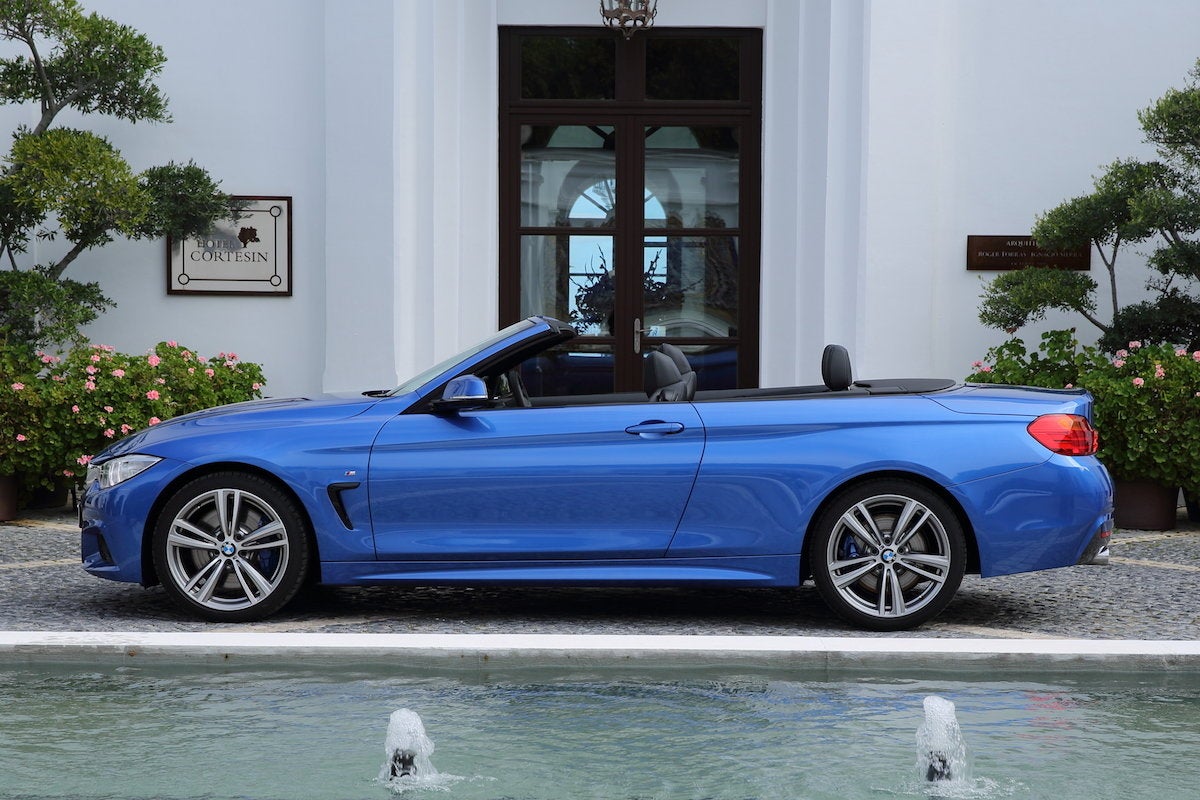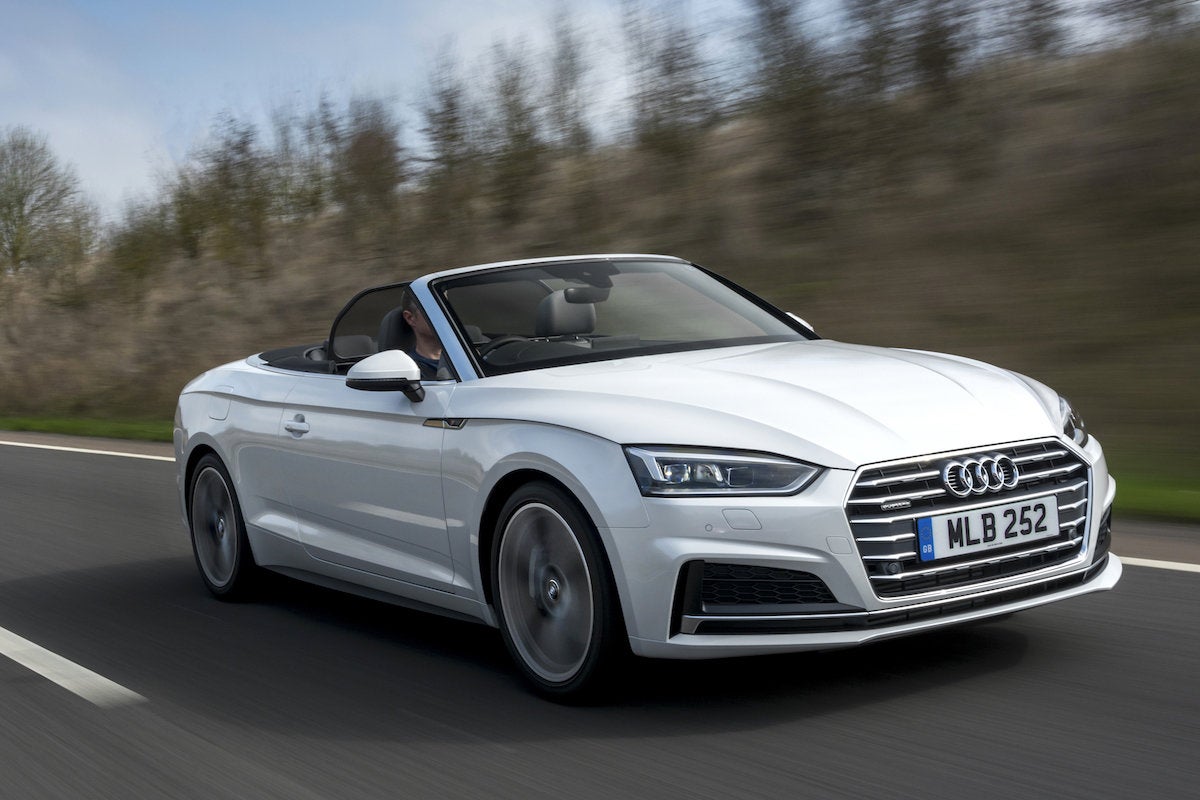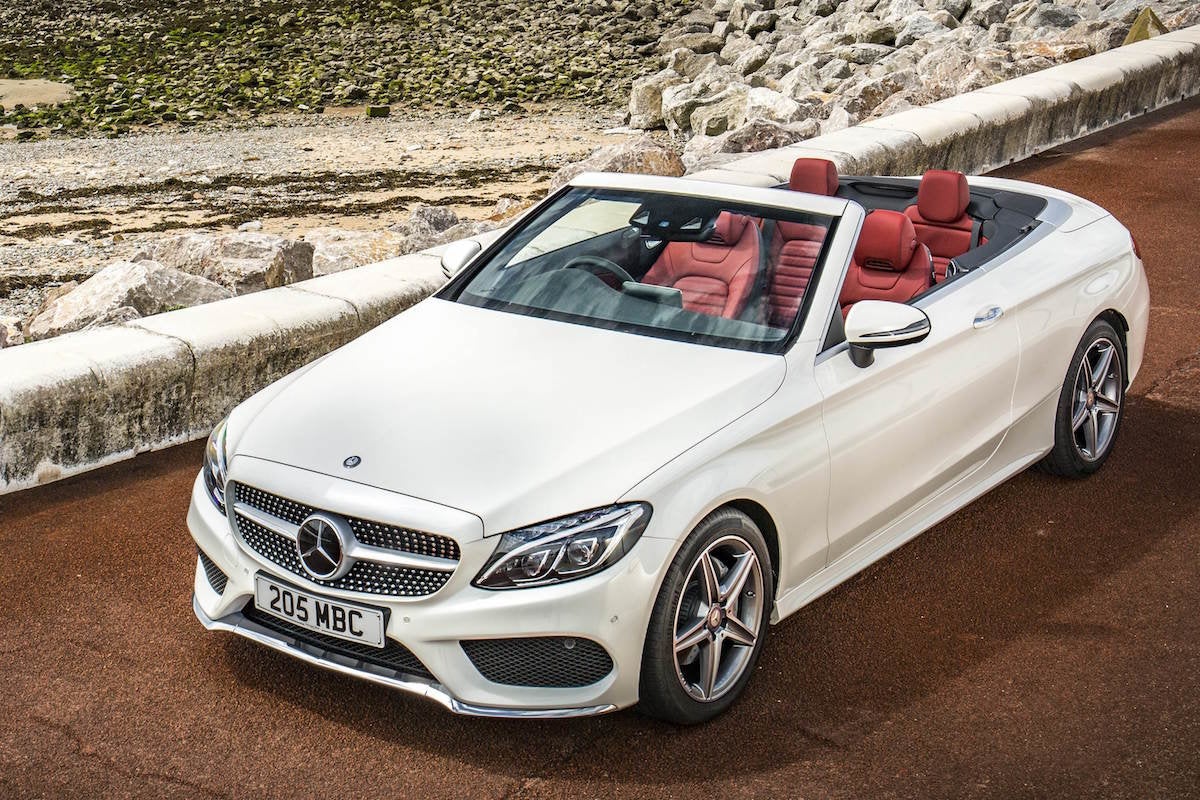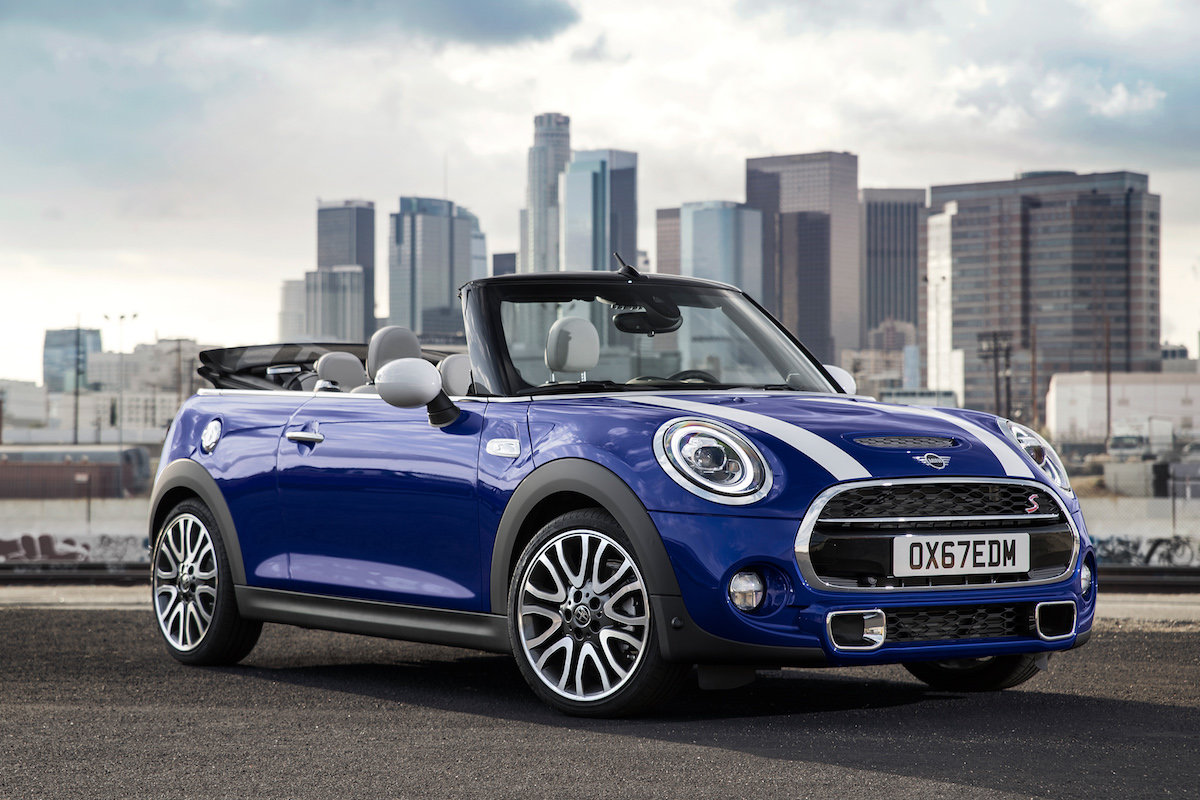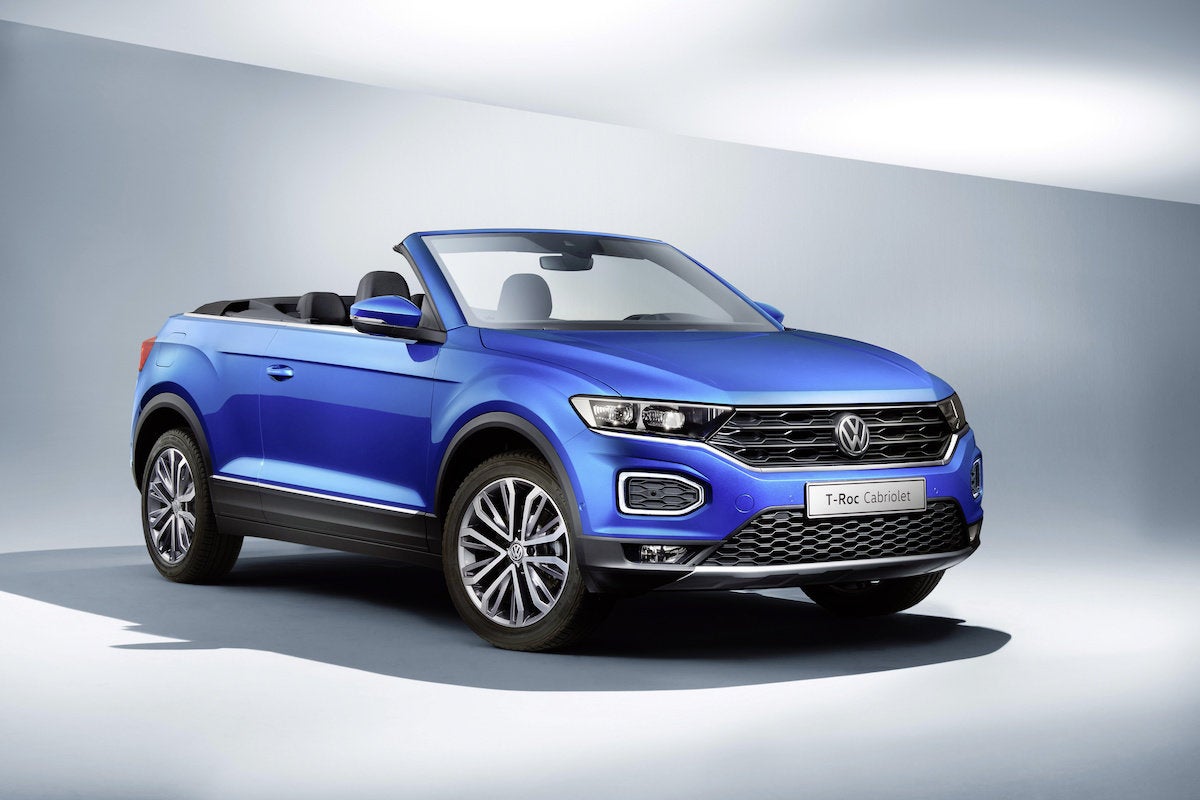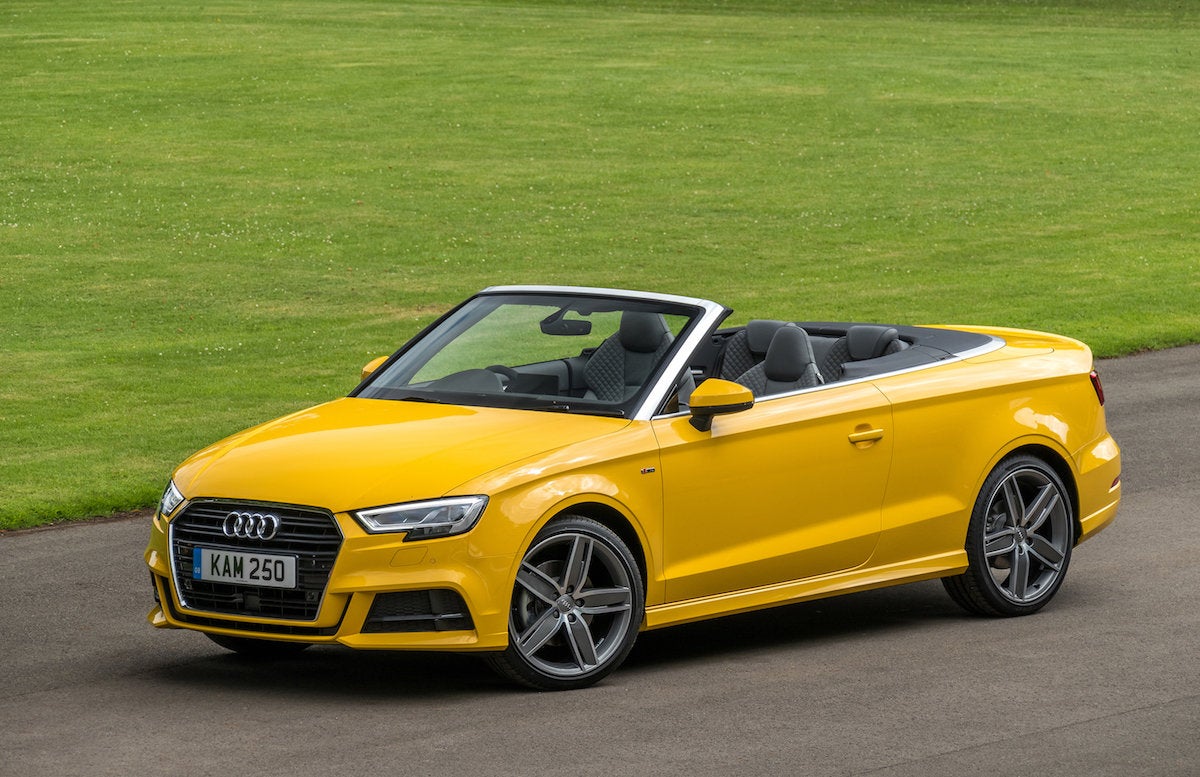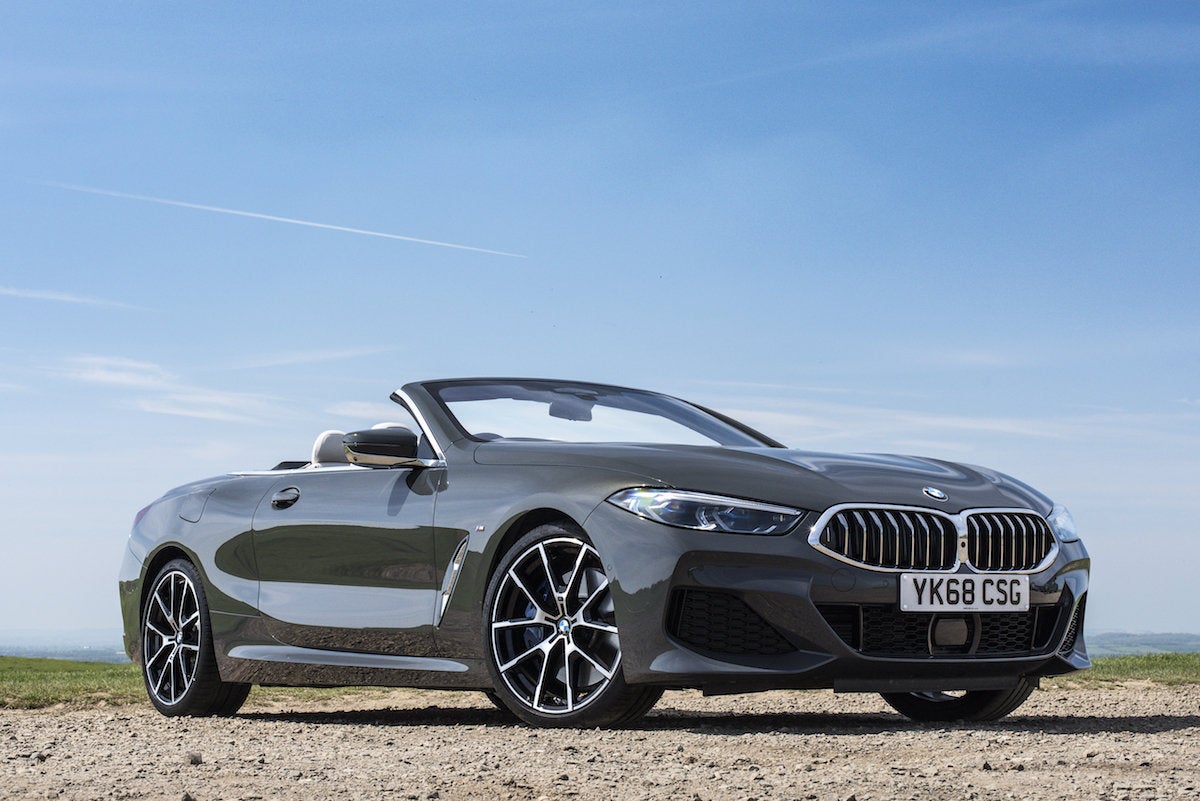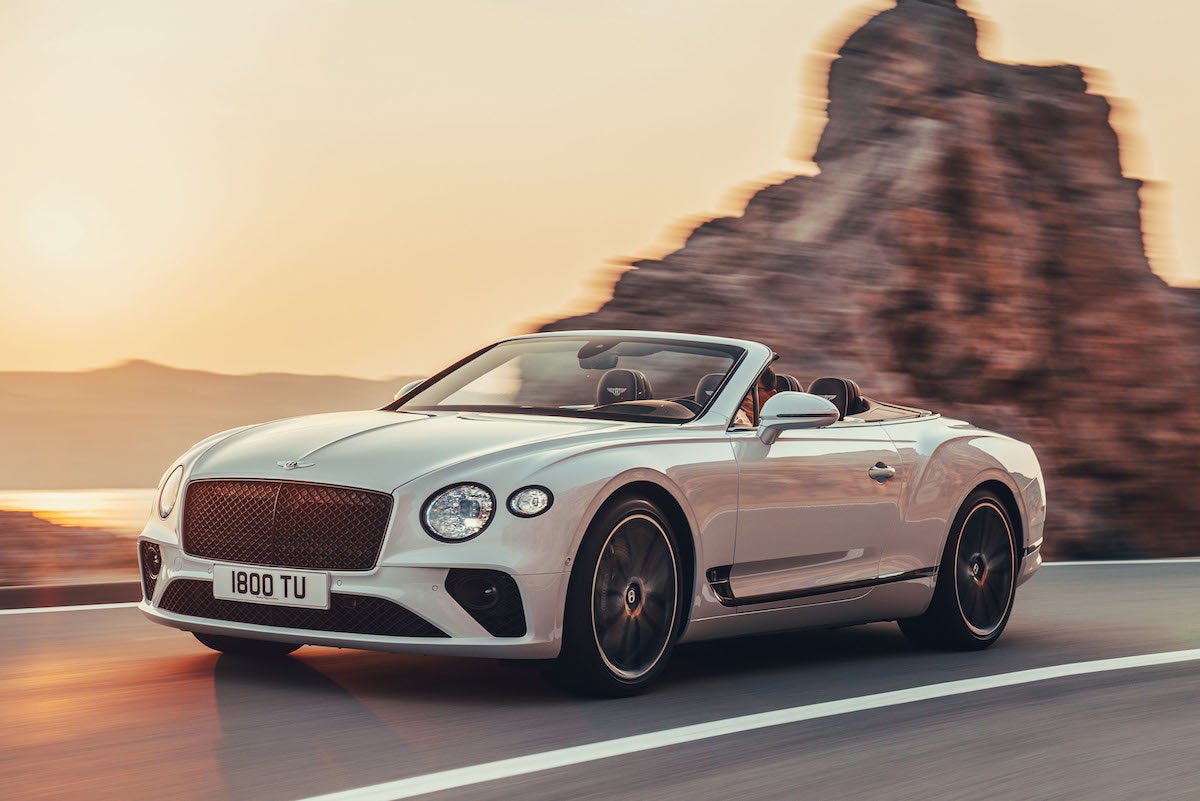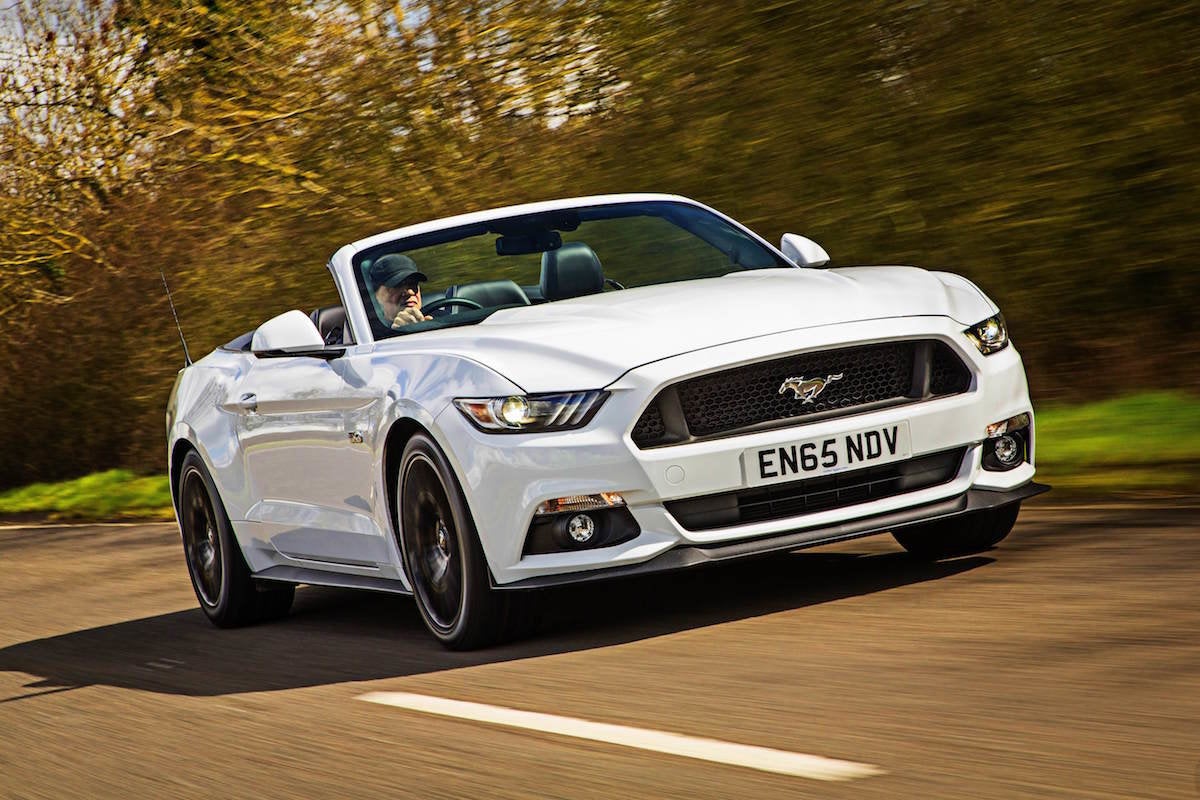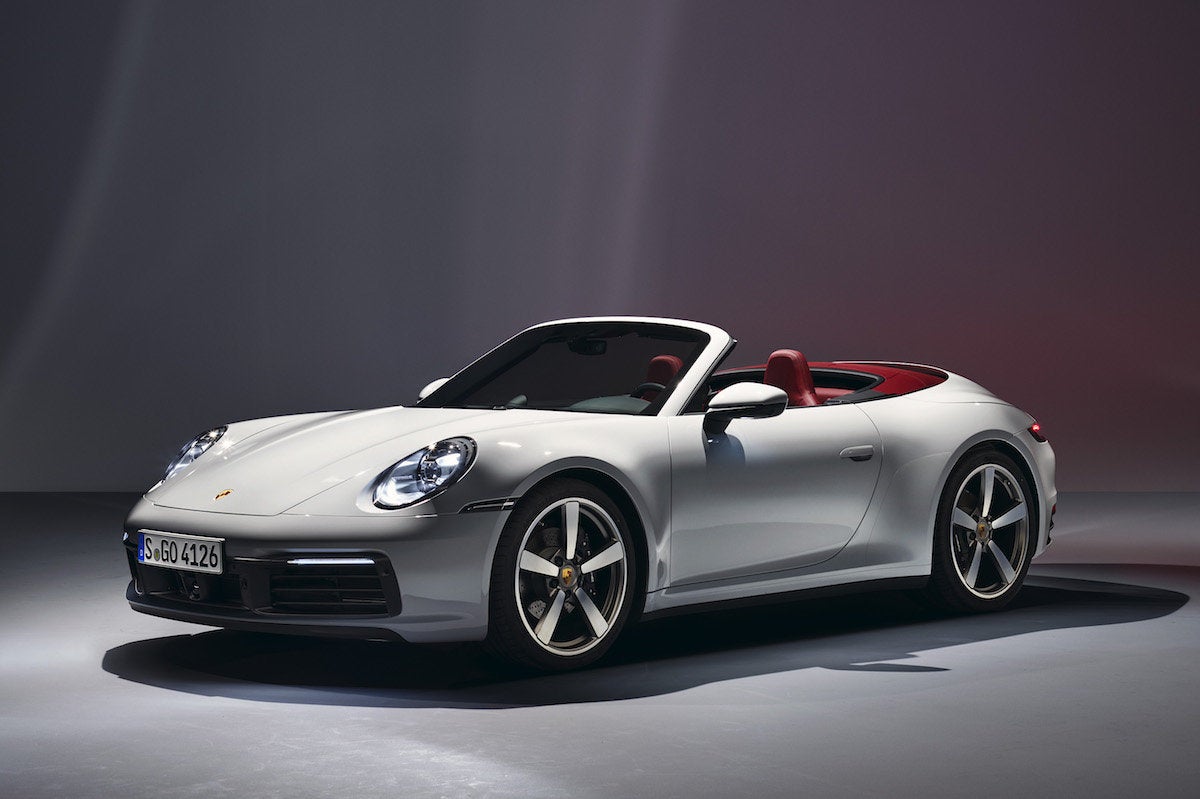The Brits love convertibles, and what’s better than being able to take the family with you in a four-seater soft-top? There are a surprising number of options open to you if you fancy a bit of open-air motoring, from pint-sized hatchback-derived models to the ultimate in luxury. It’s not all good news, though, as convertibles tend to offer less practicality, with tighter passenger accommodation and smaller boots. Chopping the roof off can also lead to some dynamic compromises, and open-tops are never quite as involving to drive as their hard-top counterparts. But for many, a summer’s day wafting around with the roof down, taking in the sights, sounds and smells of the countryside in a four-seater convertible, more than makes up for those downsides.
Best 4-Seater Convertible Cars 2024
- BMW 4 Series Convertible (2013-2019)
- Audi A5 Cabriolet (2016-)
- Mercedes-Benz C-Class Cabriolet (2016-)
- Mini Convertible (2016-)
- Volkswagen T-Roc Cabriolet (2020-)
- Audi A3 Cabriolet (2014-2020)
- BMW 8 Series Convertible (2019-)
- Bentley Continental GT Convertible (2019-)
- Ford Mustang Convertible (2016-)
- Porsche 911 Cabriolet (2020-)
BMW 4 Series Convertible (2013-2019)
BMW has been making four-seater convertible versions of the BMW 3 Series and 4 Series models for several decades now. The styling of this previous model, codenamed F33, is more sober than the current G23 version currently sold as a new car, which divides fans with its looks, plus it's more affordable to buy and it’s still a brilliant car.
The BMW 4 Series Convertible majors on rear-wheel-drive fun, and is available with a host of engine and gearbox options. The petrol range spans the 2.0-litre four-cylinder 420i to a turbocharged six-cylinder M440i. There are a similar number of diesels to choose from, too, plus the range topping M4 Convertible. The diesels only really make sense for high-mileage drivers; we’d rather have a more sonorous petrol engine powering our convertible.
Inside there’s a stylish, well-made cockpit, and this generation of 4 Series used a folding metal hard-top instead of the more traditional fabric roof. This makes it feel more coupe-like with the roof up - not to mention quieter - and it also means improved security. What's more, the 4 Series is an excellent driver’s car, with an involving chassis and a fairly comfortable ride, especially if you can find a car that has the optional adaptive suspension fitted.
BMW 4 Series review
Audi A5 Cabriolet (2016-)
If you’re looking for a superb all-rounder then Audi’s A5 Cabriolet ticks virtually every box. It’s svelte and stylish, has an excellent interior and there’s a decent range of petrol and diesel engines to choose from. Like most of the cars here, it features a folding fabric roof, but it’s very well insulated from the elements and lowers in 15 seconds, raises in 18 seconds, and can do so at speeds of up to 31mph.
The 204bhp 2.0-litre four-cylinder diesel engine was by far the most popular of the diesels (a 3.0-litre V6 was previously available) and it was fitted with with Audi’s quattro all-wheel drive system. A better choice could be the 35 TFSI or 40 TFSI, which both use a 2.0-litre petrol unit that delivers a good blend of performance and economy. Many will decide that the more powerful 45 TFSI model isn't worth the extra outlay.
Whichever engine you choose in your A5, you’ll be getting a high-quality interior that’s one of the best in the business, with excellent ergonomics and Audi’s class-leading Virtual Cockpit digital display, which replaces traditional analogue dials. Space is a little tight in the back seats for adults, but there are no complaints with the size of its 370-litre boot, although that drops to 320 litres when the hood is down. Dynamically it’s not a match for the BMW 4 Series, but as a refined and very attractive cruiser, it has few peers.
Audi A5 review
Mercedes-Benz C-Class Cabriolet (2016-2023)
The Mercedes C-Class Cabriolet is the natural competitor to both BMW’s 4 Series and Audi’s A5. If the BMW has the most involving driving experience and the Audi has the best interior, then the C-Class rounds of this trio of luxurious German 4-seat convertibles by offering the greatest comfort. Mercedes doesn’t offer the latest W206 generation of C-Class as a convertible (the CLE Convertible replaces the open-top versions of both the C-Class and E-Class), but this previous W205 car is still a very accomplished all-rounder that has a range and breadth of talents to make it a highly desirable machine.
The engine line up has been refined over the years and currently runs from the C200 with its 1.5-litre four-cylinder petrol (181bhp, 0-62mph in 8.5 seconds and around 38mpg) to the frankly bonkers twin-turbo 4.0-litre V8 in the AMG C63 S. This will give you 503bhp, a 4.1-second 0-62mph time and a wallet-wilting 25mpg. In between sit the C300 and the C43. If you must have a diesel then the C220d offers up to 53mpg, with the more muscular C300d returning up to 48mpg. Unless you're covering high mileages, we’d opt for one of the petrols.
The C-Class’ cockpit is a wonderful place to while away the miles, offering all the mod cons you’d expect of a Mercedes. Front seat occupants have plenty of space but it’s a little tighter for those in the rear, especially if they’re tall and the hood is up. Boot space is good when the roof is up at 360 litres, but less commodious (285 litres) when it's down. The roof itself can be raised or lowered in 24 seconds.
Mercedes-Benz C-Class review
Mini Convertible (2016-)
For a smaller four-seat convertible, have a look at the not inconsiderable charms of the Mini Convertible. It’s not going to offer you as much space as most of the other cars here, but it is at the fun end of the spectrum, and isn’t that what convertibles are meant to be all about? The current line-up is Cooper, Cooper S and John Cooper Works (JCW), all powered by turbocharged petrol engines. The previously available diesel models were dropped when the Mini Convertible underwent its mid-life facelift in 2018. The Cooper is brisk (0-62mph in 8.8 seconds), the Cooper S is fast (7.2 seconds) while the JCW is really fast, with a 6.6-second time.
All three models share a bubbly effervescence with a good chassis and eager handling. While the Convertible’s altered mechanicals mean it isn't quite as sharp as the Mini hatch, it’s still great fun to drive, and makes a more practical alternative to fun two-seat roadster rivals such as the Mazda MX-5. The soft top works well and takes just 18 seconds to fold up or down, fully electrically, of course. What’s more, it’s a proper, fully opening convertible roof, unlike the partially opening one you get on the Fiat 500C, or the earlier Citroen C1 and Peugeot 108. The interior’s nice, although rear seat accommodation is tight and the boot’s capacity is nothing to write home about at between 160 and 215 litres, depending on whether the hood’s up or down. For four-seat wind-in-the-hair thrills, though, it takes some beating.
Mini review
Volkswagen T-Roc Cabriolet (2020-)
For 35 years Volkswagen would have been happy to sell you a cabriolet version of its best-selling Golf, and the Volkswagen Beetle Convertible was also offered until recent years, but these days the only soft-top in the company’s range is the T-Roc Cabriolet. It’s a bit of a niche model, combining typical SUV features - such as a raised ride height and rugged looks - with wind-in-the-hair fun. The only real comparable car is the Land Rover Range Rover Evoque Convertible.
Dynamically, the T-Roc Cabriolet is no sports car, as its soft suspension leads to a fair bit of body-roll while cornering and the loss of its metal roof does make it a little wobbly. On the plus side, the suspension does soak up bumps and ruts pretty well. While the five-door T-Roc is available with both petrol and diesel engines, you can only order the Cabriolet with a petrol, either a 1.0-litre or a 1.5-litre, and both are decent choices.
Judged by SUV standards, space for passengers in the back is a little tight, but it’s fine when compared to other four-seat convertibles. It's the same story with boot space, but with a 284-litre capacity, it’s not too bad. The hood, though, is excellent, lowering in just nine seconds and raising in 11 seconds. If you like SUVs and love the wind in your hair, then the T-Roc Cabriolet is certainly worth a look.
Volkswagen T-Roc review
Audi A3 Cabriolet (2014-2020)
You could be forgiven for asking whether you need to spend the money on the bigger Audi A5 Cabriolet when the smaller A3 Cabriolet is so good. There’s a range of efficient petrol and diesel engines to choose from, manual and automatic transmissions, as well as quattro all-wheel drive should you be tempted to use your drop-top A3 in inclement conditions. And with an excellent hood that keeps you well insulated from the worst of the weather, there’s no reason not to use an A3 all year round.
Where the A3 Cabrio really scores is with its excellent interior. Fit and finish is excellent and there are plenty of gadgets to play with in each specification. The electro-hydraulic hood raises and lowers in just 18 seconds and can do so at speeds of up to 31mph. As with most four-seat convertibles, rear seat space is a little tight and taller adults might struggle for legroom. At between 287 and 320 litres (hood down/up) the boot’s adequate for a weekend away, while folding rear seats give more space for luggage when the A3’s operating as a two-seater.
Audi A3 review
BMW 8 Series Convertible (2019-)
BMW’s 8 Series took over from the 6 Series in 2018 and its numerical elevation points to it being an even more upmarket model than its predecessor. In Convertible form it can be had with a brace of petrol engines as well as a diesel, and there’s a more powerful 616bhp M8 Competition version, too. Even the slowest model will accelerate from 0-62mph in less than 5.5 seconds.
The 8 Series is a big, heavy car but it proves to be very agile and nimble. It’s not particularly engaging for the driver, though, as the chassis and steering don't provide much in the way of feedback.
The interior is beautifully appointed and packed with kit. BMW’s central display and iDrive controller is still one of the best infotainment interfaces on the market, although we’re less keen on its new digital dashpod, which isn’t a patch on Audi’s Virtual Cockpit. The hood is excellent, raising or lowering in just 15 seconds, but for a car that’s almost five metres long, the rear seats are laughably small.
BMW 8 Series review
Bentley Continental GT Convertible (2019-)
You could argue that spending upwards of £175,000 on a new convertible is somewhat profligate, but if you simply must have the best, then they don’t come much better than Bentley’s Continental GT Convertible. Not only is it hugely fast but it’s also got one of the finest interiors in the business. Leather clads virtually every surface and endows the cockpit with an opulent feel.
The Bentley also offers monstrous performance from either a 542bhp twin-turbo 4.0-litre V8 or a 626bhp W12. Although the W12 posts the most impressive figures (including a heady 207mph top speed) it’s the V8 that gives the Bentley a more sporty character. Air suspension ensures a good ride, but flick it into Sport mode and it offers very decent body control, especially for a car that weighs 2.5 tonnes.
It’s not all good, though. Despite the Bentley’s massive bulk the rear seats are tight if the front seat passengers are on the tall side, and a 235-litre boot isn’t very impressive for a car of this size. It’s still a glorious machine, though, perfect for wafting down to the south of France, and a worthy alternative to offerings from the likes of Ferrari and Aston Martin.
Bentley Continental review
Ford Mustang Convertible (2016-2023)
American muscle cars certainly aren’t for everyone, but when this generation of Ford Mustang was announced, there was jubilation among fans in the UK, because a right-hand drive version was included. As well as the coupe, a four-seater convertible version could be ordered with either a 2.3-litre EcoBoost engine with 286bhp or a fruity V8 with 410bhp. The former will be cheaper to run but the latter sounds wonderful, especially when the hood’s down.
The Mustang is relatively cheap for a performance car and this can be seen in the quality of materials used in its interior: it’s nowhere near as classy as most of the four-seat soft-tops here. And it’s also worth pointing out that the Mustang didn’t fare too well when tested by safety experts Euro NCAP, initially garnering just two stars. Even when it was retested with more driver aids fitted, it still only received a three-star rating.
As with many four-seat convertibles, the rear seats can’t really be considered full size – children and teenagers will be happier than adults – and the seat backs are quite upright with awkwardly shaped side bolsters. But the boot is relatively large at 332 litres and isn’t affected when the hood is lowered. Overall, the Mustang lacks the polish of its European counterparts, but opt for the V8 and you’ll have one of the best soundtracks on offer.
Ford Mustang review
Porsche 911 Cabriolet (2020-)
The Porsche 911 in coupe form is almost the default supercar choice, and that's because it just does everything so well. And the same is true of the Cabriolet version, too, especially if driving thrills are at the top of your wish list for a four-seater drop-top. Chopping the roof off a car generally results in a less focused driving experience, but with this latest generation of 911 Cabrio, most drivers would be hard pressed to tell the difference.
It’s available in Carrera, Carrera 4, Carrera S, Carrera 4S, Turbo and Turbo S guises, but we reckon the entry-level Carrera will be more than enough for most, with 380bhp, a 4.4-second 0-62mph time and a top speed of 181mph. The Cabrio features Porsche’s adaptive dampers as standard, so you’ll get a decent ride as well as excellent body control and precise steering.
If you need plenty of space in your four-seater then the 911 might not be for you. Those rear seats are pretty tight, mainly suitable for children, and their backrests are quite vertical, which isn’t particularly comfortable for their occupants. However, it’s better to have them than not, like in open-top sports car rivals such as the Jaguar F-Type. The roof operates in just 12 seconds and insulates you well from the elements, but luggage space is in short supply at just 132 litres. Not the roomiest of soft-tops, then, but for driving thrills, it has no peers.
Porsche 911 review

